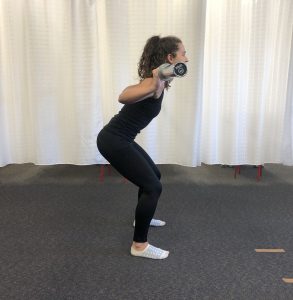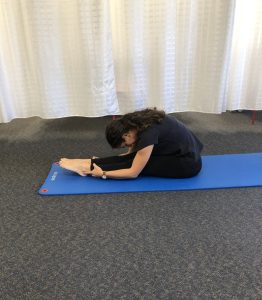What is it?
Posterior ankle impingement occurs when the superior talus (top of the heel bone) compresses against the posterior aspect of the tibia (back of the shin bone) moving through extreme end range ankle plantarflexion movements (pointing the foot). This condition is most commonly seen in ballet dancers, gymnasts, cricket bowlers and football players.
There are certain bony variants that make a person more likely to develop this condition when performing these extreme plantarflexion movements. Os trigonum is an extra bone that is unfused from the posterior talus. This extra bone takes up space in the back of the ankle joint and can cause pain in extreme end range ankle plantarflexion. This bony variant occurs in approximately 10% of people, but may not be symptomatic unless performing these extreme ranges of motion.
Posterior ankle impingement can also present secondary to an ankle sprain involving a combined mechanism of plantarflexion and inversion (foot rolls out in a pointed position).
Conservative management – how does Physiotherapy help?
Physiotherapy will involve a number of components to help in reducing inflammation in this area and preventing recurrence on return to activity.
First of all, your physiotherapist will advise what types of movements and activities to avoid to facilitate optimal recovery, such as extreme ranges of ankle plantarflexion, running and jumping. It is also important to address technique flaws that may have led to developing the posterior ankle impingement and in turn, reduce the risk of recurrence in the future. For example, in a ballet dancer, winging or fishing the foot (foot deviates away from midline, with more weight placed on the 1st toe) in a rise or releve will promote collapsing into the back of the ankle joint, rather than creating length and space in the back of the joint. Strength training of the intrinsic muscles of the foot and calf complex will be essential in correcting this technique flaw and preventing recurrence. Good control and strength of the hip external rotators (turnout muscles) will also help with overall alignment through the leg in a rise.
Non-steroidal anti-inflammatory medication can help in the initial stages of management to reduce inflammation that has developed as a result of this repetitive pinching and compression at the back of the joint. Your physiotherapist will also use manual therapy techniques to create space in the back of the ankle joint, off-loading the bony structures that are pinching. This would include soft tissue massage of the muscles surrounding the ankle, as well as ankle and midfoot joint mobilisations.
Surgical management
In some cases, a posterior ankle impingement may not respond well to conservative management and may require surgical intervention. Patients may consider this option if they want to return to elite level activities involving extreme ranges of plantarflexion. This procedure would involve removing the os trigonum using an arthroscopic method (keyhole). Your physiotherapist will be able to guide you through a rehabilitation process following surgery to ensure an optimal return to your chosen activity, in conjunction with the surgeon’s instructions.
If you have posterior ankle pain or think you could have a posterior ankle impingement please call the clinic on 8544 1397 and book in an appointment to see one of our highly trained physiotherapists to start your rehabilitation journey.




